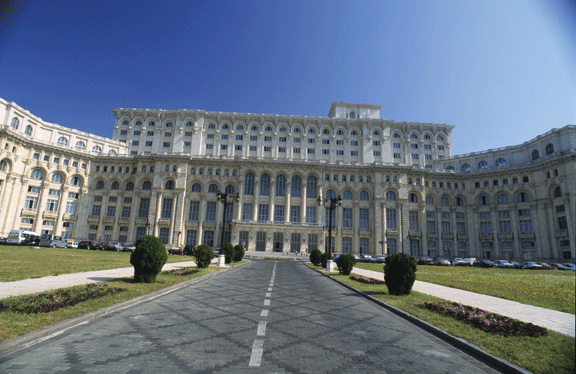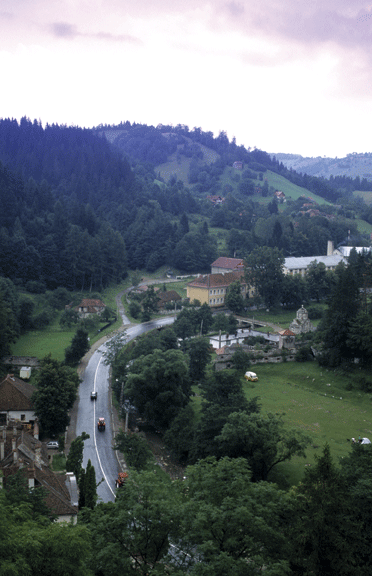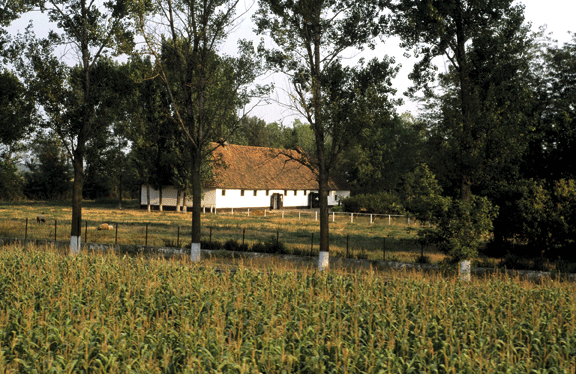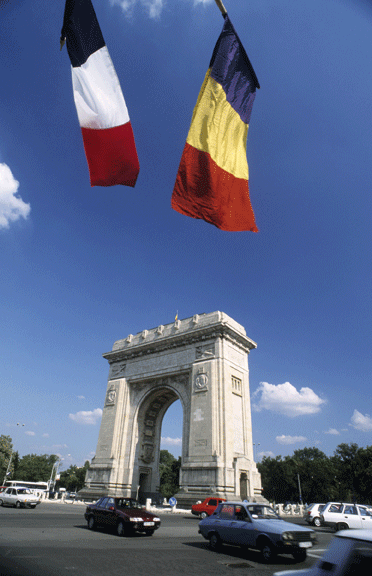
Travel
Romania
Bucharest and Beyond, from Brasov to the Black Sea

Leafy boulevards, lake-studded parks, fin de siècle architecture and its own Arc de Triomphe give Bucharest an unmistakeable Parisian flavour. Indeed, Romania is a country where Latin charm is still alive in the valleys of the Carpathian Mountains and in the natural beauty of the Danube delta. During the 1980s the capital Bucharest was transformed with great building works with the Parliament House as its centrepiece.
By: Veronica Maria Garbutt
Bucharest derives its name from a legendary shepherd called Bucur who built a settlement amid the Vlasia forest. Down the years both Targoviste and Bucharest have served as the Wallachian capital, but the latter finally secured its claim in 1659 – its location at the crossroads of the trading routes to Istanbul outweighing the former’s defensive advantage. The nobles who moved in built palaces and surfaced the roads and by the 1890s new boulevards were laid out in the style of Haussman’s Paris.
The heart of the city is Piata Revolutiei, site of the Royal Palace and halfway along Bucharest’s north-south artery Cortea Victoriei. Since 1950 the palace has housed the National Art Museum. The north side of the square is occupied by the Athenée Palace hotel while to the east is the neoclassical Romanian Athenaeum. Southwards is Piata Univèrsitati, the hub of the capital’s intellectual life. The Palace of Parliament is the world’s second largest building and can be visited on a 45 minute tour. Nearby lies the historic centre where artisans and traders settled and which is home to the caravanserai Manuc’s Inn.
Getting around in Bucharest is easy. The metro system offers a standard fare and covers much of the city. Taxis are inexpensive too and you can cross the city for the lei equivalent of a few dollars. Major boulevards run north-south from the Arc de Triomphe down to the centre crossed by others going east-west. The Calei Victoriei – a continuation of Kisileff Avenue – is where the denizens like to walk on summer evenings. Parallel to Calei Victoriei is Magheru Boulevard, the location of several travel agencies, airlines, hotels and cinemas.
Bucharest offers several museums and galleries. At the open-air Village Museum in Herastrau Park near the Arc de Triomphe you will find village architecture and crafts from all over Romania. And apart from the National Museum of Art another “must” is the National History Museum on Calei Victoriei which houses the superb jewels of the Treasury. Just opposite is the Bucharest Financial Piazza which is adjacent to the Economic Consortium Palace, designed and built by the French architect Paul Gotterau between 1894 and 1900.
The city’s artistic life is vibrant. A classical repertoire – Verdi, Puccini, Rossini, Mozart – is performed at the Opera House. The splendid Romanian Athenaeum is the venue of international standard concerns by the George Enescu Philharmonic Orchestra. Although most of the theatres and concert halls are closed in summer, outdoor concerts can be enjoyed during the warm evenings at Cismigiu Gardens and Tineretului Park. In May the Dinu Lipatti piano music festival is held and come November there is the Ion Luca Cariagle theatre festival.
Public gardens in Bucharest are plentiful and date from the early 19th century when Prince Gheroghe Bibescu commissioned Austrian landscape gardener Carl Meyer to design the Kiseleff Gardens complete with man-made lake and rocks. Herastru is the city’s largest park and here you can rent boats or swim in the lake. The Cismighu Gardens were landscaped in classical English style by a Berlin gardener, while a distinctly French influence can be seen in Parcul Carol which was laid out in 1906 to coincide with the Romanian International Fair.
Every visitor likes to shop and you will find department stores around Piata Uniri and on the main boulevards. Alternatively, a market of street traders selling local crafts opens daily in the narrow streets around Lipscani close to the old town. A tradition of fine handicrafts has developed in Romania’s predominantly rural economy. Look out for handmade sheepskin waistcoats, flat-weave carpets, musical instruments, embroidered blouses, wooden kitchen utensils and painted ceramics.
Dining out in Bucharest is generally inexpensive. You can have a great evening sampling Romanian food and enjoying wild Gypsy singing and music at Hanul Manuc, the aforementioned caravanserai in the old town. Another place with a great atmosphere is the Doina Restaurant in Ion Mincu’s classic neo-Romanian building at 8 Sos Kisleff. The Golden Horn specialises in Turkish dishes and Nan Jing is Bucharest’s oldest and finest Chinese restaurant. For al fresco dining beneath the plane trees don’t miss Planet in University Square. It is a pleasant spot to while away a summer evening and prices are a fraction of Planet Hollywood in the West.
Sporting events, fashion shows, conferences and open-air concerts take place in the Sports and Culture Palace in the centre of the Youth Park. At Clubul Ilie Nastase you can swim, have a sauna or use the gym. The Cycling Society is at 2 Str. Academiei. Romania is quite a place for steam train enthusiasts. Especially popular are Translyvania’s narrow-gauge tracks on forestry railways and you can book tours through Romstream Aldo, 7B dul Burebista, Bucharest.
Time now to get out of the city and head up to the mountains. About three hours away by train the ancient medieval town of Brasov nestles in the hills of Transylvania. It started life as a Saxon trading town as its strategic location is at the meeting point of three principalities. Today it is Romania’s third largest city and the gateway to the mountain resort area stretching along the Prahova and Timus valleys. Poiana Brasov, six miles south of the city, is the country’s major winter sports resort.
While in town don’t miss dining in the main square Piata Sfatului. It is lined by ornate merchants’ houses, their shop fronts opening towards the 15th century Council House or Town Hall, now the History Museum. This tells the story of the Saxon guilds who were prominent in the town and who used to meet in the Merchant’s Hall opposite. Designed in Transylvanian Renaissance style, this stunning building is now home to craft shops and the Cerbul Carpatin restaurant where you can enjoy lively Hungarian-influenced gypsy music along with your goulash.
On Citadel Hill is a group of fortifications built between the 14th and 16th centuries. The citadel, which is well preserved, is made of bricks and overlooks the wooded slopes below. Its coat-of-arms can be seen on Catherine’s Tower which dates from the mid-1400s. The old archives of the town are located in Blacksmith’s Bastion. Also dating from the 15th century is Weaver’s Bastion which houses the Museum of the Barsa Land Fortifications. Other sights in town include the state theatre, opera, puppet theatre and municipal theatre home to the state philharmonic orchestra.
A good excursion from Brasov is to the small town of Bran, which despite its size is probably the most popular tourist site in Romania. Lying some 28 km from Brasov (about an hour by bus), it is home to a castle built between 1377 and 1382 by the Saxons. It is known as Dracula’s Castle owing to its association with Vlad the Impaler who is said to have attacked it in 1460. Perched atop a rocky mountain it indeed gives the impression of a fairytale castle.
After careful restoration the castle now looks just as it would have done during the time of its most famous occupant Queen Marie of Romania, a granddaughter of Queen Victoria of England. A maze of spiral stairs, creepy nooks and secret rooms overhangs the central courtyard and the place is furnished with solid four-poster beds and throne-style chairs. It is all most quirky and spooky. After the royal tour you can check out the Village Museum and the Ancient Custom House Museum, both located in the castle grounds.
Time now to get back on the train to Bucharest then head eastwards to the Black Sea, some 250 km from the capital. Founded by the Greeks and originally known as Tomis, Constanta was a flourishing trade centre as early as 600 BC. During the 19th century Constanta became the Black Sea’s major port bringing much needed trade and employment to the coastal region. Today, with over half a million people, Constanta is Romania’s second largest city.
Highlights of this port city include the Archaeological Museum set up by the city mayor in 1879, the Art Museum with works by Aman and Grigoriescu and the Ethic Museum which displays colourful Dobrogean rugs and folk costumes. Halfway up Boulevard Tomis lies the Geamia Hunchlar mosque built in 1868 with stones from the old gate of the former Ottoman fortress. The Naval History Museum is housed in the old Navy High School at Str. Traian 53.
The Black Sea coast’s pre-eminent resort Mamaia is located just north of Constanta – a 7 km stretch of beach between the sea and the freshwater Siutghiol Lake. Created for family holidays, it offers a wide range of hotels and entertainment, both indoor and outdoor. South of Constanta are a string of resorts called Neptune, Jupiter, Aurora, Venus and Saturn, but the best bet of all is a resort town lying even further south towards the Bulgarian border, Mangalia. This summer retreat offers everything from sun, sand and sea to watersports, ancient ruins and colourful artists’ villages. Happy trip!